[Expert Views] Solutions in Patents: How to Prevent Thermal Runaway of Lithium Batteries from Cell, Module and BMS (Part 1)
As electric vehicles have become more and more popular, fire accidents occurred within EVs are occasionally reported in the news. If we take a closer look at photos taken during these fire accidents, such photos often reveal that damages to the EVs are more severe than that seen with conventional engine vehicles. Mostly, they are caused by the power source of the EVs – Lithium batteries. Lithium batteries contain highly flammable lithium metal and organic materials. When the battery catches fire, it keeps burning at high temperatures, thus making it difficult to be put out, or even causing an explosion. Such phenomenon is called thermal runaway. Since lithium batteries have be widely used in EVs, thermal runaway has become a critical problem for the industry to solve to improve driving safety. In this article, the author will try to find solutions to lithium battery thermal runaway through patent search and analysis.
Patent Search Description
The patent search scope of this article is an intersection of lithium battery technology and keywords of thermal runaway, and limited to the US patents filed after 2010. There are about 2,700 patents within this scope, as shown in below table. The patent analysis of this article is counted by the number of patents.
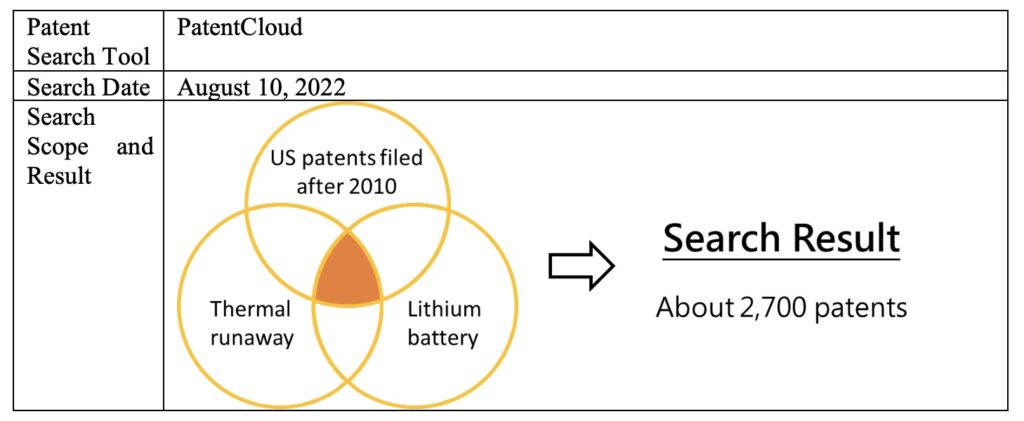
Major Patent Owners
Fig. 1 shows the list of patent owners of the solutions for lithium battery thermal runaway. Battery materials suppliers are mainly Japanese and US companies, such as Mitsubishi Chemical and 3M. The largest number of companies in the list are battery cell makers, including major lithium battery suppliers from Japan, Korea and China such as Panasonic, LG Chem and CATL, while US companies include solid-state battery start-ups QuantumScape and PolyPlus. Car parts suppliers include Johnson Controls and Bosch. Automobile manufacturers include traditional car makers such as Toyota, GM, as well as EV makers such as Tesla and Faraday Future. Clearly, the companies in the entire supplier chain, from upstream material suppliers to automakers, are all committed to solve the problem of lithium battery thermal runaway and to that end, have deployed their own patents:
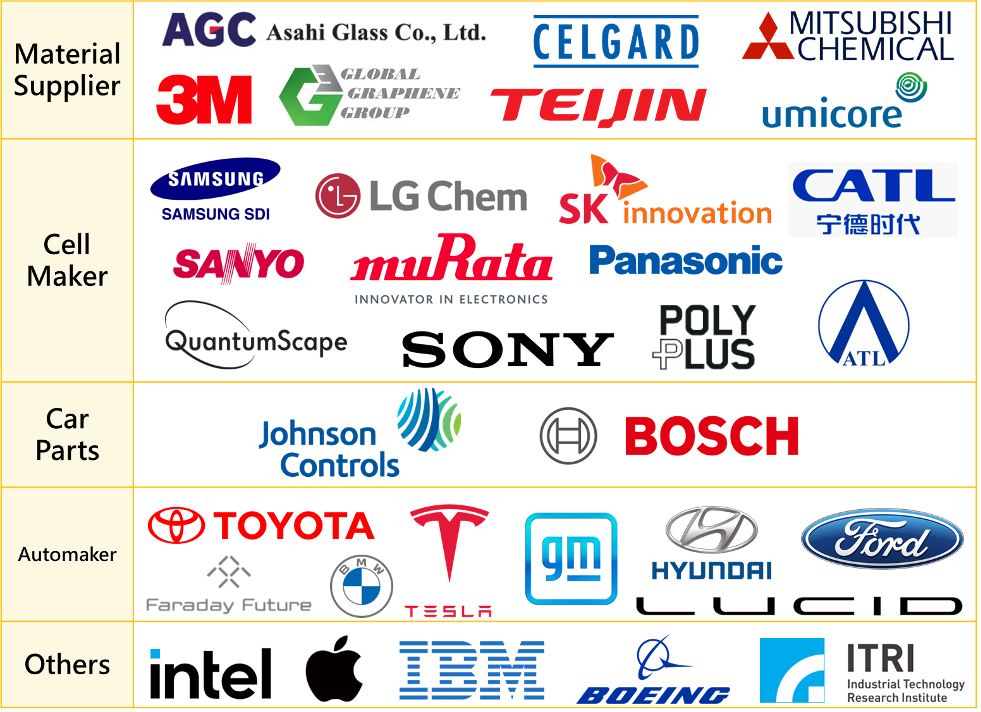
Fig. 1 Patent owners of solutions for lithium battery thermal runaway
Patent Filing Trend
Fig.2 illustrates the number of patents for thermal runaway solutions filed between 2010 and 2022
[1]. As shown, the number of related patents has increased since 2010. The main reason is that the market share of EVs has been increasing, and the issue of battery safety has become more and more important. The industry is investing more resources to prevent the problem of thermal runaway.
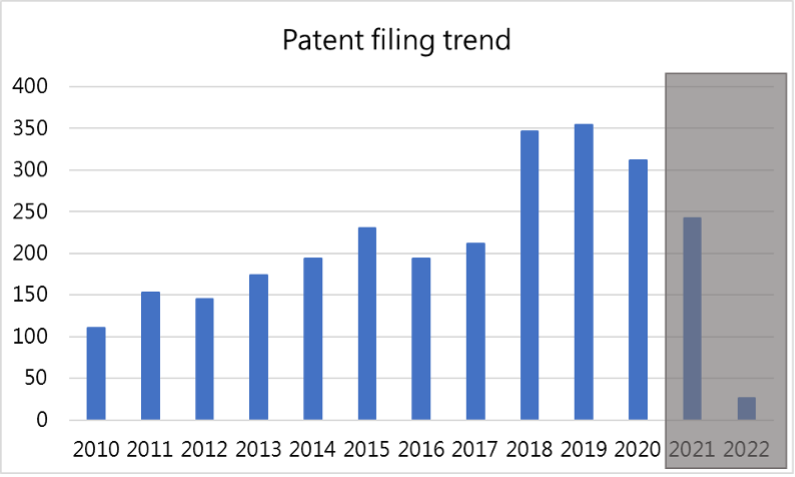
Fig.2 Patent filing trend of solutions for lithium battery thermal runaway
Technologies involved toward the prevention of battery thermal runaway
Many reasons can lead to thermal runaway in lithium batteries. One main reason is that when the battery is in its charging/discharging cycle, crystallized lithium metal may be formed on the negative electrode of the battery which is called “lithium dendrites”. When the dendrites accumulate to a certain level, the separator between the positive and negative electrodes is punctured to cause a short circuit inside the battery. Also, thermal energy is generated when the battery is being charged/discharged. Without proper heat dispassion, heat will accumulate at some area and lead to high temperature before catching fire. Moreover, when the battery is over-charged or over-discharged, it may result in unexpected chemical reactions inside the battery, producing flammable gases that can cause an explosion.
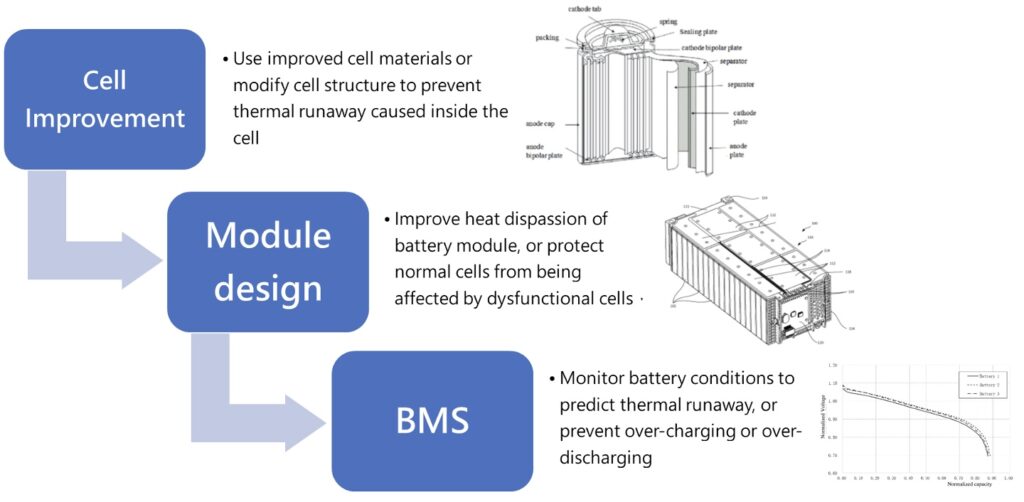
Fig.3 Technologies related to prevent battery thermal runaway
As shown in Fig.3, within the patent search scope of this article, the patents related to battery thermal runaway solution can be categorized into three major groups of technologies, cell improvement, module design and BMS (Battery Management System). Cell improvement relates to the use of improved cell materials or modifying cell structure to prevent thermal runaway cased inside the cell. Module design relates to the improvement of heat dispassion of battery modules or protecting normal cells from being affected by dysfunctional cells. BMS is to monitor battery conditions to predict thermal runaway, or to prevent over-charging or over-discharging. The following is a detailed explanation of the three groups of technologies.
Cell Improvement
Currently, most of the batteries used in EVs are lithium-ion batteries, whose structure consists of a positive electrode, a negative electrode and an electrolyte. A separator is displaced between the positive and negative electrodes. In order to increase energy density, the electrodes and separator are stacked or wound in multiple layers to form a cylindrical, a pouch type or a prismatic battery cell. As shown in Fig.4, the solution for battery thermal runaway from the perspective of cell improvement includes material improvement such as positive and negative electrodes materials, and the improvement of cell structure.
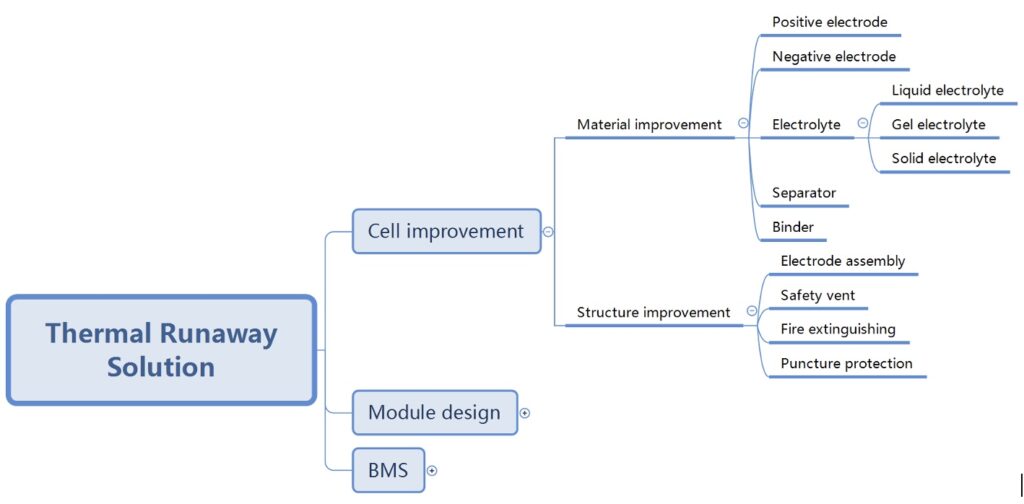
Fig.4 Cell improvement technologies in patents of thermal runaway solutions
-
Material improvement – Positive electrode (cathode)
Usually, the active material of the positive electrode (cathode) has low electric and thermal conductivities. Low electric conductivity results more heat when discharging, and low thermal conductivity results poor heat dispassion, hence leading heat accumulation to cause thermal runaway. In Global Graphene’s patent US11217792, a novel cathode active material for lithium batteries is provided. As shown in Fig.5, the cathode material is a graphene-enabled hybrid particulate, which is made by fine cathode active material particles and graphene sheets. Graphene has high electric and thermal conductivities. Graphene sheets covers the outer surface of the hybrid particulate and also is blended inside the particulate to improve the electric and thermal conductivities and reduce the risk of thermal runaway.
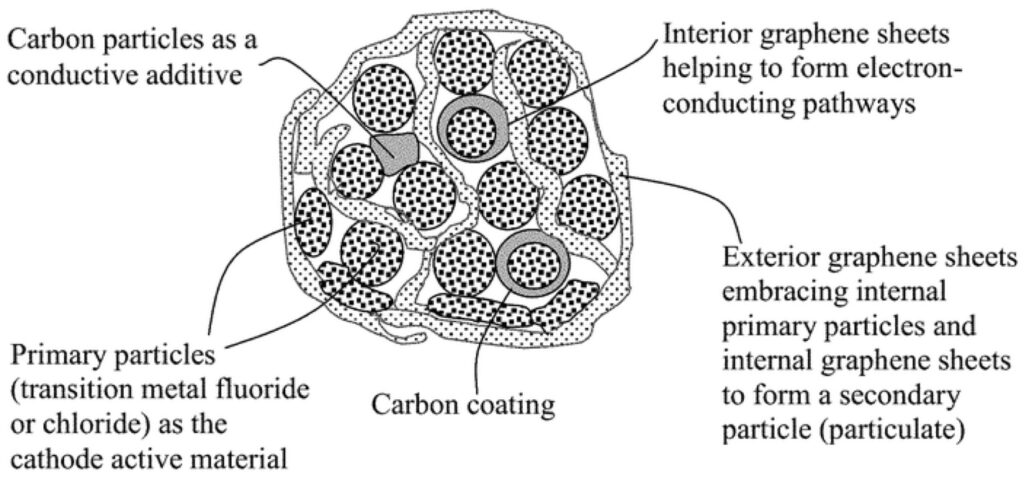
Fig.5 Drawing of Global Graphene’s patent US11217792
-
Material improvement – Negative electrode (anode)
As mentioned above, dendrites may be formed on the negative electrode (anode) during charging/discharging cycles, which cause internal short circuit and thermal runaway. Global Graphene’s patent US10862129 provided a high-elasticity protective polymer layer disposed between the anode’s active material layer and separator, as shown in Fig.6. The protective polymer layer provides several benefits: (a) the formation of dendrite is essentially eliminated; (b) uniform deposition of lithium back to the anode side is readily achieved; (c) the layer ensures smooth and uninterrupted transport of lithium ions from/to the lithium foil and through the interface between the lithium foil and the protective layer with minimal interfacial resistance; and (d) cycle stability can be significantly improved and cycle life increased.
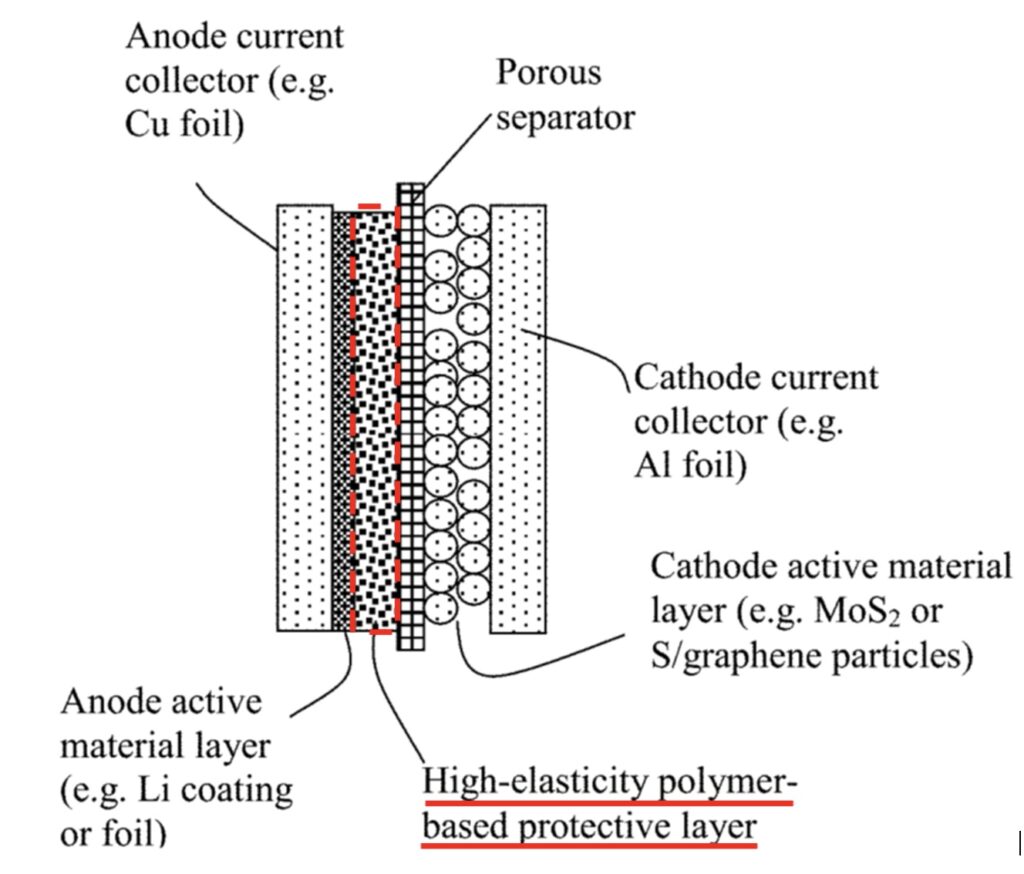
Fig.6 Drawing of Global Graphene’s US10862129
- Electrolyte – Liquid electrolyte
The electrolyte in a typical lithium battery cell uses a liquid organic substance as a solvent and is injected into a cell structure as shown in Fig.7. The organic solvents in the electrolyte may be decomposed during the charging/discharging cycle, resulting in heat accumulation or even explosion. Therefore, additives are added in the electrolyte to lower the risk of decomposing reaction. Taking Samsung’s patent US10003102 as an example, an electrolyte additive for lithium battery is provided. The electrolyte additive can facilitate the formation of a protective layer (also referred to as a “solid electrolyte interphase (SEI)” layer) having improved high-temperature stability on positive and negative electrodes of the battery, thereby improving the safety of the battery.
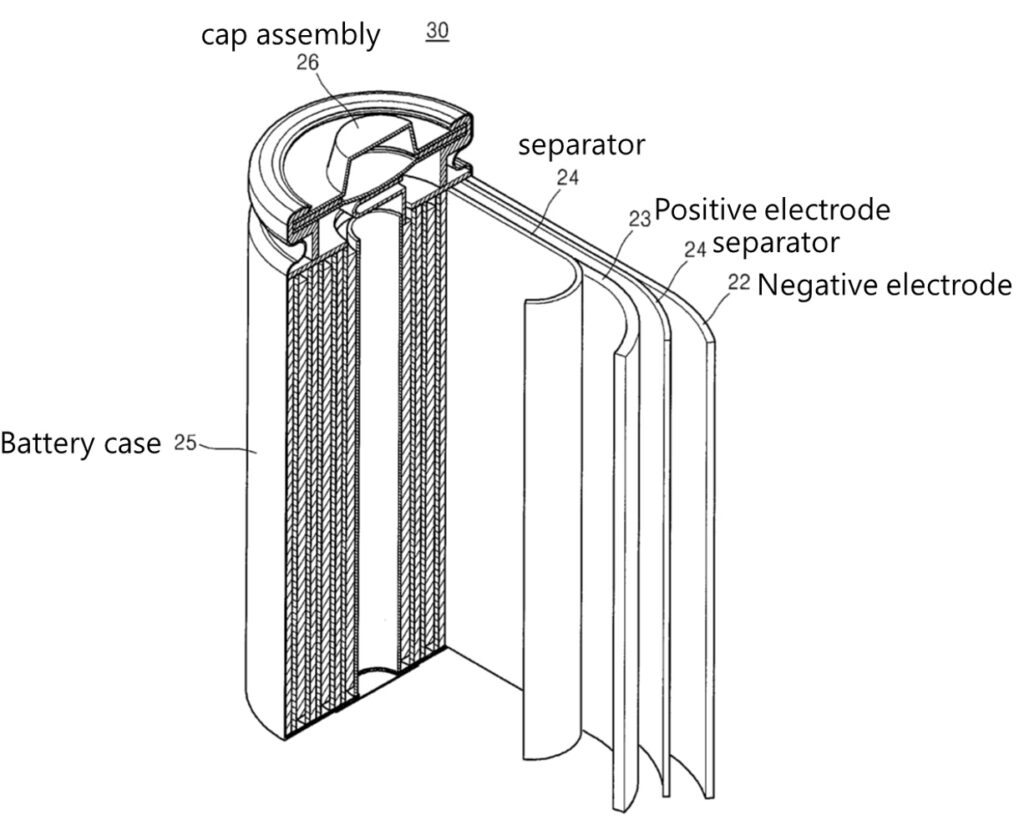
Fig.7 Drawing of Samsung’s patent US10003102
-
Electrolyte – Gel electrolyte
As mentioned above, the disadvantage of liquid electrolyte is that when the battery is punctured, the electrolyte will spillover and cause a short circuit. Therefore, adding polymers to make the electrolyte gel-like can prevent the electrolyte from leaking. Taking GM’s patent US10476105 as an example, a self-healing gel-type electrolyte composite is provided. The electrolyte composite includes a gel-forming precursor and a gel-forming initiator. The self-healing precursor, in response to contact with a fracture in a gel-electrolyte membrane, fills the fracture. Also, the self-healing precursor, in response to contact with the self-healing initiator, polymerizes to thereby inhibit the propagation of the fracture.
-
Electrolyte – Solid electrolyte
Solid-state batteries have been the most popular topic for lithium battery in recent years. They use non-flammable solid electrolytes to replace the traditional electrolyte and separator and can significantly increase energy density of the battery. Solid-state batteries are not yet commercialized in electric vehicles, mainly because of the high manufacturing cost. The company with the largest number of patents for solid-state batteries is Toyota, followed by LG Chem. Startup companies such as QuantumScape, PolyPlus, StoreDot, and Sila Nanotechnologies have received investments from battery manufacturers and car manufacturers for developing solid-state battery technology. In the case of PolyPlus, which has been working with SK Innovation in recent years, the company's core technology is to develop a lithium-ion conductive glass sheet as a solid-state electrolyte, as shown in Fig.8.
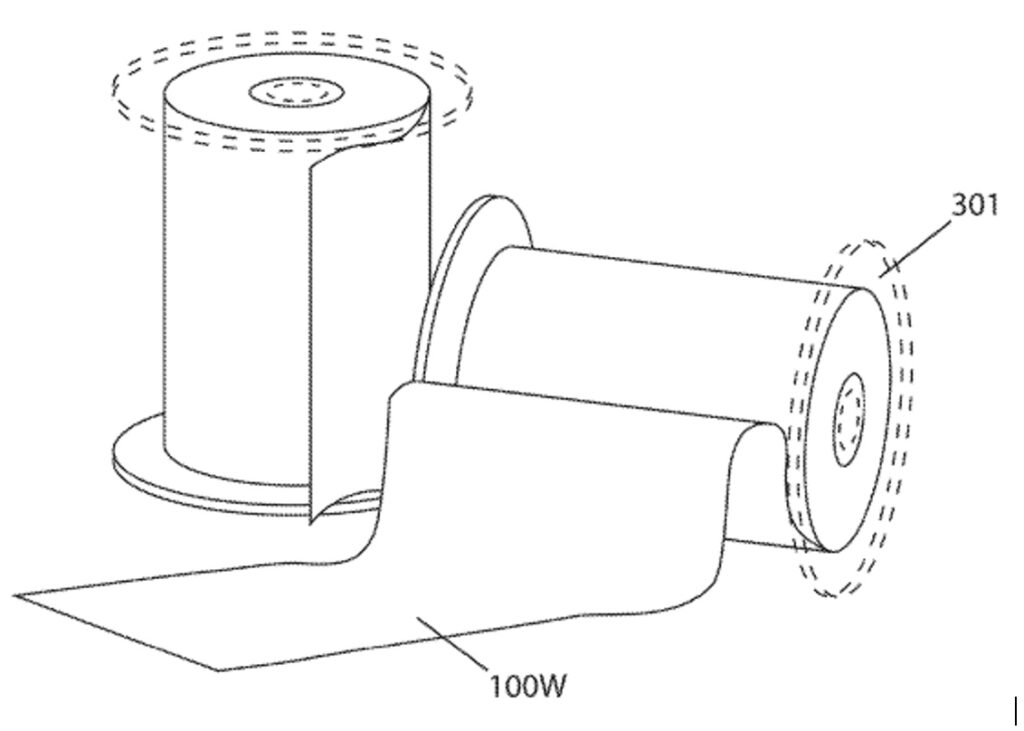
Fig.8 Drawing of lithium-ion conductive glass sheet in PolyPlus’ patent US20210320328
-
Separator, Binder
A separator for lithium batteries is a porous film sandwiched between the positive and negative electrodes to avoid short circuit. The main technical development of the separator is to reduce the internal resistance to avoid temperature rise and to increase the thermal and mechanical stability to reduce the risk of breakage, such as FUJIFILM’s patent US20220209362. A binder of lithium batteries is to adhere the cathode or anode materials to a current collector. The development of the binder is to make the cathode and anode material evenly dispersed, reduce the internal resistance, and avoid the formation of lithium metal dendrites, such as Samsung SDI’s patent US10050246.
-
Electrode assembly
Battery cells are usually formed by stacking multiple layers of electrodes or winding electrodes to increase the capacity and energy density, but it also increases the risk of internal short circuit and high local temperature. LG Chem's patents US20200127246 and US20200403211 provide improved designs for electrode assemblies of pouch-type lithium batteries and cylindrical lithium batteries, respectively. For example, as described in US20200127246, when a pouch-type battery expands due to gases generated by decomposition of liquid electrolytes, the electrode assembly will be disconnected to prevent the battery from continuing to discharge or even causing an explosion, as shown in Fig.9.
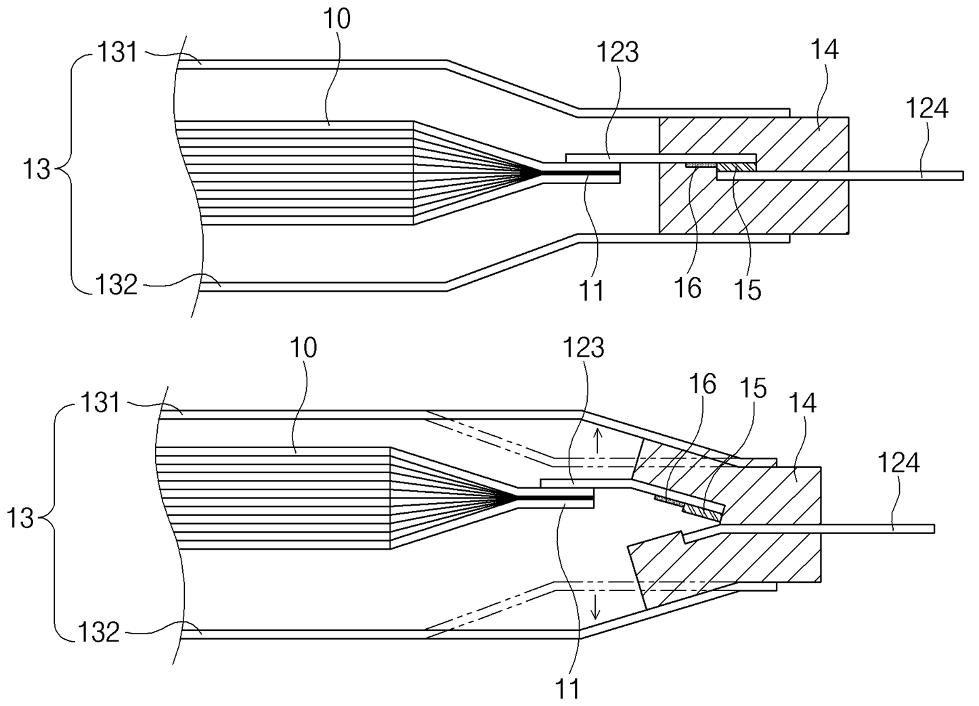
Fig.9 Electrode assembly of pouch-type battery in LG Chem’s patent US20200127246
-
Safety vent
In order to avoid explosion caused by the gas produced during charging/discharging process, battery cells have a pressure relief valve (safety vent) to discharge gas and heat. For example, in Tesla’s patent US9692025, a scoring is provided on the top cover of a battery cell. When thermal runaway occurs, the top cover will break along the scoring so that the cell can quickly release gases and heat in a predetermine direction to avoid explosion of the whole cell.
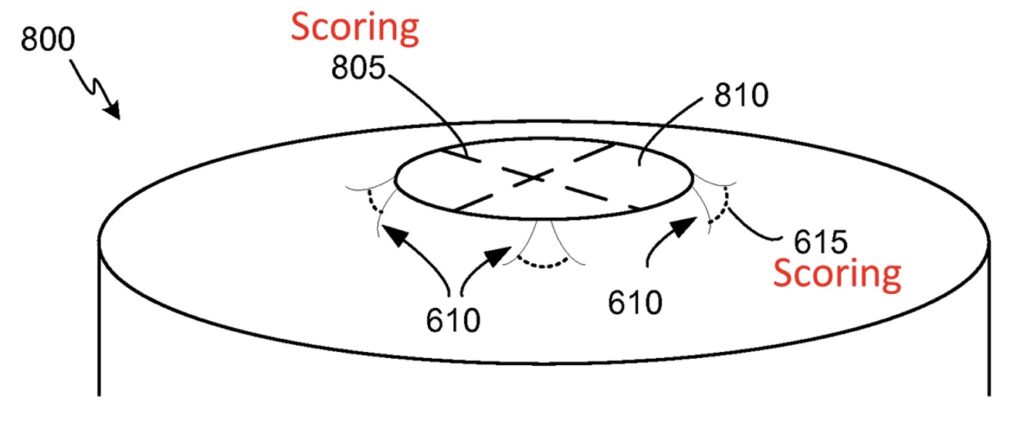
Fig.10 Top cover of a battery cell shown in Tesla’s patent US9692025
-
Fire extinguishing mechanism
When thermal runaway occurs in a battery cell, it can be mitigated by fire extinguishing materials disposed inside the cell. Taking LG Energy Solution's patent US11264661 as an example, a fire extinguishing unit is disposed near the electrode assembly in a pouch-type battery, as shown in Fig.11. When the temperature of the battery exceeds a predetermined value, the fire extinguishing unit ejects a fire extinguishing powder to prevent spreading of thermal runaway.
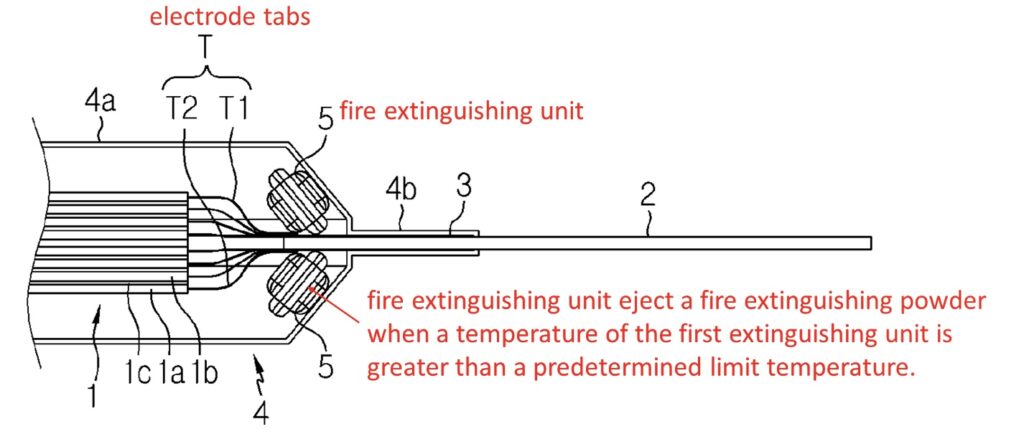
Fig.11 Drawing of LG Energy Solution’s patent US11264661
-
Puncture protection mechanism
When a lithium battery is punctured by a sharp object, the battery will catch fire immediately, which is a major cause of fire in an electric vehicle accident. Therefore, it is desirable for a battery to remain in a stable state when punctured. Taking LG Chem’s patent US10903529 as an example, an insulator assembly 200 is disposed between an electrode assembly and an outer case of a pouch-type battery, as shown in Fig.12. The insulator assembly 200 includes fell-off parts 222. When the battery is punctured by a nail, the fell-off part 222 penetrates through the electrode assembly, and forms a through-hole 2 having a diameter greater than that of the nail to avoid short circuit caused by direct contact of the nail and the electrode assembly.
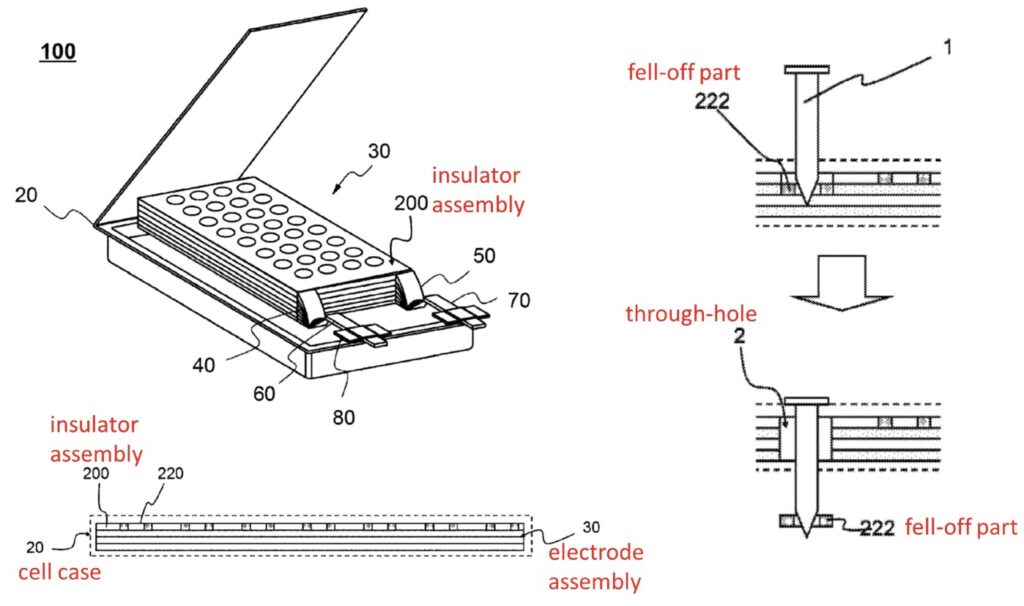
Fig.12 Drawings of LG Chem’s patent US10903529
In summary, there are various ways to prevent thermal runaway of lithium battery in the technologies of cell manufacturing, including material improvement and cell structure improvement. When using lithium batteries in electric vehicles, the batteries are assembled into battery modules which have desired capacity and voltage. When the quantity of battery increase, the risk of thermal runaway also increases. Therefore, the design of battery modules also requires to handle thermal runaway problems. This particular aspect will be introduced in the next article.
[1] Invention patents are published eighteen months after their filing date. Patents filed after 2021 are not fully published.
 Author: Jean Chou
Author: Jean Chou
Taiwan Patent Attorney / Certified Valuation Analyst / Co-Chair of Business IP Management Committee, TWPAA / Vice President of
WISPRO Technology Consulting Corporation
Email: jeanchou@wispro.com













 Author: Jean Chou
Taiwan Patent Attorney / Certified Valuation Analyst / Co-Chair of Business IP Management Committee, TWPAA / Vice President of WISPRO Technology Consulting Corporation
Email: jeanchou@wispro.com
Author: Jean Chou
Taiwan Patent Attorney / Certified Valuation Analyst / Co-Chair of Business IP Management Committee, TWPAA / Vice President of WISPRO Technology Consulting Corporation
Email: jeanchou@wispro.com
![[Expert Views] How Tesla Explores its Patent Assets](https://demo2.mih-ev.org/s3/mih%2Fwp-content%2Fuploads%2F2023%2F01%2FWispro-Expert-Views.png)

